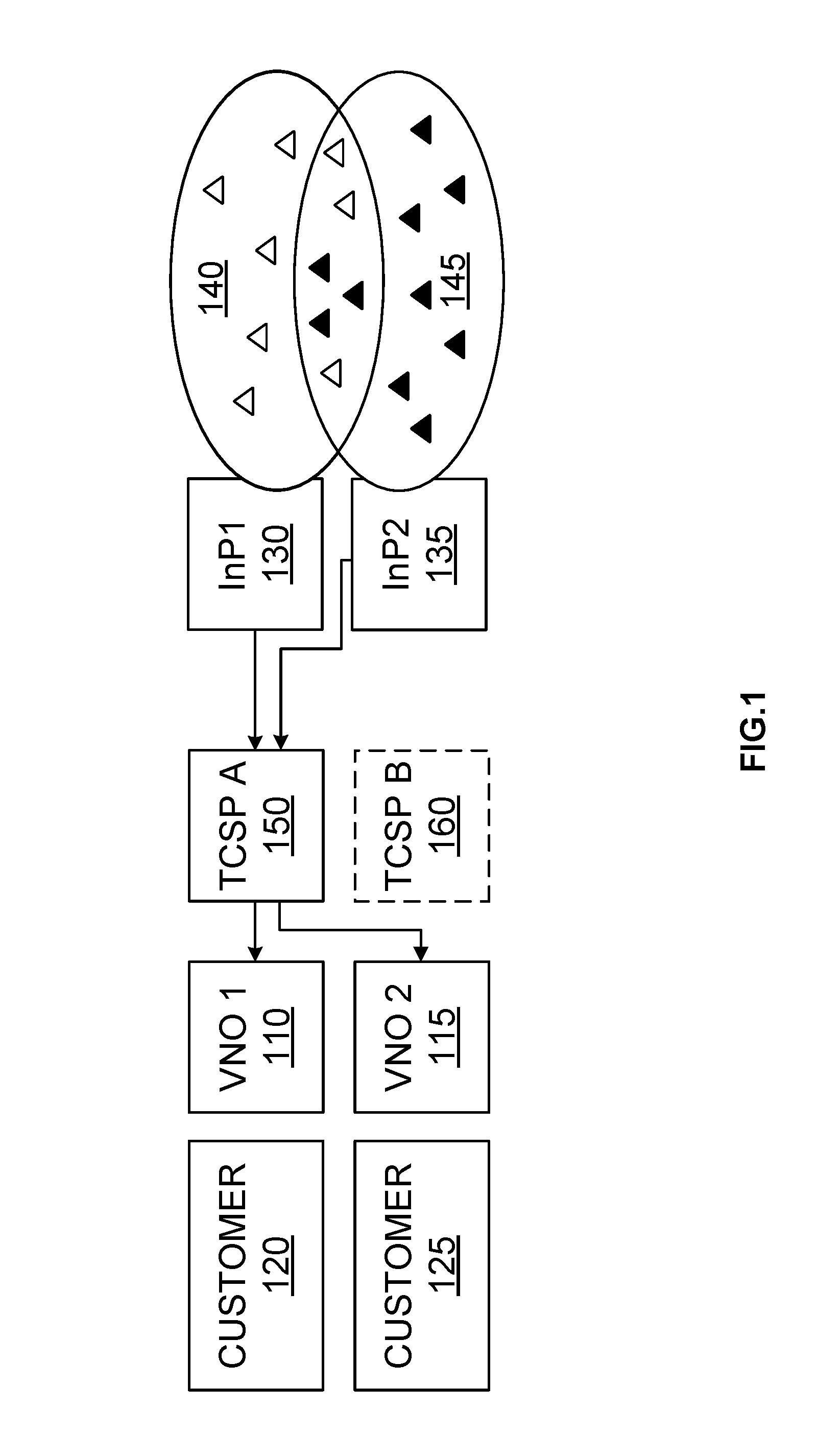Admission of a Session to a Virtual Network Service
a virtual network and session technology, applied in the field of virtual networks, can solve the problems that the attachment procedure that relies so heavily on the access to resources in the core network may not be feasible, and achieve the effect of sufficient network resources
- Summary
- Abstract
- Description
- Claims
- Application Information
AI Technical Summary
Benefits of technology
Problems solved by technology
Method used
Image
Examples
Embodiment Construction
[0029]FIG. 1 is a diagram illustrating the decoupling of roles that may occur in future network architectures. Such a decoupled network architecture may be applicable to next generation wireless networks, including so-called Fifth Generation (5G) communication networks. In such a decoupled network, the network access infrastructure can be isolated as a separate entity, indicated here as an Infrastructure Provider (InP). RAN functionality provided by the InP may be separated from the Core Network into a different network domain so that it can be administered and managed separate from the Core Network. The Core Network (CN) functions may be provided by a Service Provider, referred to also as a Telecommunications Connectivity Service Provider (TCSP). In some regions, an InP may serve as the Access Network (or as a part of the Access Network) of a plurality of different TCSPs. Customer facing services are shown in the following examples as being provided by a virtual network operator (V...
PUM
 Login to View More
Login to View More Abstract
Description
Claims
Application Information
 Login to View More
Login to View More - R&D
- Intellectual Property
- Life Sciences
- Materials
- Tech Scout
- Unparalleled Data Quality
- Higher Quality Content
- 60% Fewer Hallucinations
Browse by: Latest US Patents, China's latest patents, Technical Efficacy Thesaurus, Application Domain, Technology Topic, Popular Technical Reports.
© 2025 PatSnap. All rights reserved.Legal|Privacy policy|Modern Slavery Act Transparency Statement|Sitemap|About US| Contact US: help@patsnap.com



